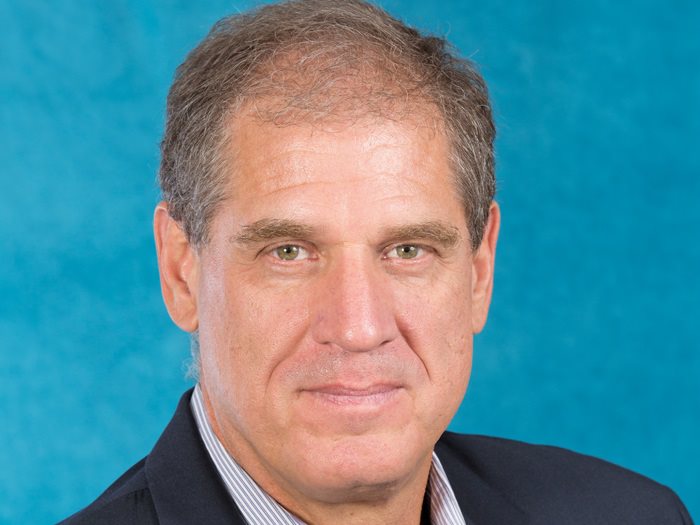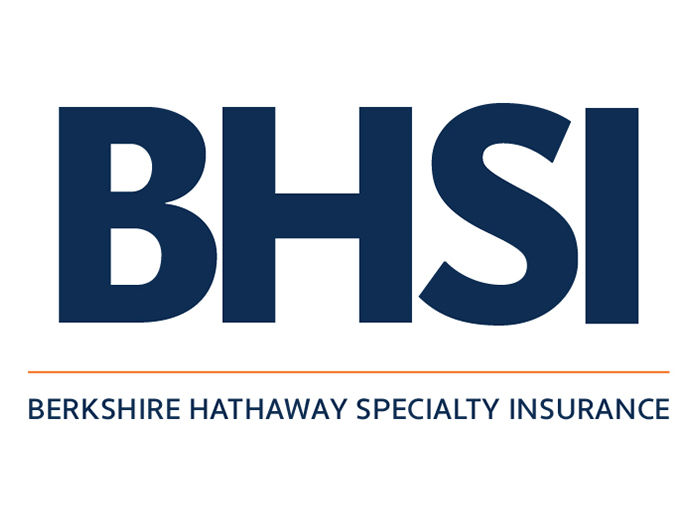5 Workers’ Comp Pharmacy Trends to Watch in 2024

The landscape of pharmacy use in workers’ compensation will always bear watching. “If it’s not one thing, it’s going to be another” is a fair assessment of the trends, year in and year out.
This fall, Michelle Kerr, the chair of National Comp and the Risk & Insurance workers’ compensation editor, caught up with Johnny Taylor, assistant vice president, ancillary benefits and pharmacy for Gallagher Bassett.
They discussed current trends in pharmacy use, including the top five pharmacy trends to look out for in 2024. The following is a transcript of that conversation, edited for length and clarity.
Risk & Insurance: If you think about the top five trends for 2024, is there one in particular that’s top of mind?
Johnny Taylor: Physician dispensing in general throughout the market has been a persistent challenge. It’s been around for quite a while and has evolved over time. Ten years ago, there were more opioid medications, pain medications being dispensed out of clinics.
Now, we’re seeing our higher-cost topicals, creams that oftentimes have low-cost alternatives, especially over the counter. So there’s a couple things to keep an eye on with respect to that, because payers have their eyes on this specific category within the therapeutic drug classes. Oftentimes, they’re not in-network, so they’re out-of-network bills; they get routed after the fact. The injured worker walks out of the clinic with the medication, but sometimes the cost could be four or five times as much as the cost of going to a retail pharmacy.
What we’ve done is put some edits and controls in place with our pharmacy benefit management partners, where we actually route the paper bills to them for adjudication. If it’s not on formulary, it kicks out and presents as a prior authorization request to the resolution manager. We’ve had success with that. In 2024, that’s going to be probably the number one topic, I would imagine, that folks are going to be keeping an eye on.
The other piece of that — I live in Florida, and there is a new law there that states that medication is essentially equal to medical treatment and requires the completion of a DWC-25 request for prior authorization prior to dispensing of a medication for a physician’s office.
It’s too soon to tell what the impact of that is going to be, but that’s something to keep an eye on as it pertains to physician dispensing in general.
R&I: Thanks for that. What’s number two on your list?
JT: Number two would be behavioral health. And what I mean by that is, mental health awareness has been on the rise, and I think in a very good way. The way the market has embraced mental health — I mean, you look around today, it’s probably a topic that 20, 30, 40 years ago might have been referred to as something else. I think most folks are more comfortable addressing it now. But we see that awareness on the rise.
The question, I think, is how are workers’ compensation carriers going to manage these types of claims if they become compensable? And then what’s the potential impact on pharmacy utilization if these types of claims are deemed compensable over time?
I looked at our therapeutic classes, our drug mix within our book of business, and we’re seeing that antidepressants, anti-anxiety agents, beta blockers and the like account for roughly 10% of our total spend. Whereas, years ago, it was a little bit lower, so we’re seeing a slight uptick there. But it’s going to be very interesting to see how these types of claims evolve over time within the market.
R&I: From the behavioral health side, there are mental health challenges that come along with an injury, and then there’s the lesser category of direct mental health claims — what they used to call “mental/mental” claims. Are you more focused on one or the other, or are you looking at the topic more generally?
JT: I think it’s more holistic. The reason I say that is because, at National Comp in Las Vegas this year, there was a lot of discussion around behavioral health. So providers are trying to expand their networks, but it’s not as easy.
There’s a shortage of resources just in general, even on the group health side for most folks. Then trying to fit that into a workers’ compensation system is quite challenging. We had numerous discussions with a lot of very good partners in the market that are looking to solve for this, but that’s a fundamental challenge that still exists today, just from a resource standpoint.
R&I: So … how are they looking to solve for it?
JT: I think the key problem right now is just building a sufficient network nationwide. There are certain regions of the country that have better resources or access to resources than others. But with Gallagher Bassett’s book of business and our type of client mix, it can range significantly.
We have a lot of folks that are outside of metropolitan areas — and even in some metropolitan areas, there’s still a lack of access, or lack of resources, rather. So that’s the challenge that the provider relations aspect of our market is trying to figure out right now. But there is definitely a need for it, because it’s only growing.
It’s the same on the home health side. Outside of pharmacy, I manage home health and some of our other ancillary services, and we’re seeing that folks are getting out of the home health market.
Nurses are going elsewhere. We’re seeing a labor shortage on the home health market, and with an aging workforce over time, within the next five, six, seven years, that problem could be compounded.
I don’t want to get outside of the scope of this discussion. This is related to pharmacy. But it is similar, the lack of resources — it’s just that supply and demand issue that we’re facing right now. So the market is really navigating this new challenge, and I think it’s going to be very interesting to see what that impact on pharmacy utilization will ultimately be down the road.
R&I: What other trends should we be looking out for?
JT: Number three on my list is not anything new, but we continue to monitor opioid utilization. There’s a good segment of our clients that pay attention to this. It’s not quite the issue it was, at least in the workers’ compensation space. I want to be clear. The opioid epidemic is still going on. But I think the industry has done a phenomenal job of tackling the issue of opioid prescribing and opioid utilization.
Ten years ago, one out of three scripts was a pain medication, and we’ve seen that utilization continue to decline. Right now, within our book of business, we’re around 15% by spend, which is fantastic, and that’s due to a number of different initiatives.
What we’ve done in terms of clinical intervention opportunities is to pick up the phone and have a doctor call a doctor, whether it’s a peer-to-peer or drug utilization assessment review.
There have been some regulatory impacts as well, where the daily supply is being limited. I live in Florida, so Florida always comes to mind. But a couple years ago, the state enacted a seven-day supply limit on the first script of an opioid medication.
We’ve mentioned physician dispensing; we’re seeing that shift over to more high-cost topicals, which is a cost containment issue, but from a potential for abuse and a risk issue, that’s a more positive trend, I think, within the market.
Also, the CDC updated its guidelines in 2022 that pertain to how opioids are dispensed. It’s essentially just a recommendation.
They also made it clear that the clinical practice guidelines provide recommendations, but they do not replace a clinical judgment and individualized patient-centered decision-making. So it is going to be interesting to see if and how that impacts the market. So far, we’ve seen pretty consistent trends, and I feel pretty positive going forward into 2024 about where we are with that. But that’s still always going to be a topic that folks are going to have their attention on.
R&I: Have you seen any kind of response to those 2022 guidelines?
JT: The perception is, well, they’re relaxing the guidelines, so therefore, opioids are going to be prescribed more frequently, more common. “Are we going to go into another cycle of potentially misprescribing or abuse?” was the thinking. We’re not seeing that in the data at all. So I think that it’s important to pay attention to and monitor, but so far so good, from where I sit.
R&I: That’s great to hear. I don’t think anyone wants to see an expansion of the prescribing of opioids. What about number four?
JT: Number four on my list has to do with the impact of long COVID on pharmacy. We want to see how that is going to specifically impact pharmacy utilization over the long term. Because these are situations where, if these claims are compensable, they’re compounding issues with medical treatment, because folks are having to deal with different health issues that they didn’t beforehand.
This impact could last months, if not years. I think society in general is very much in a discovery phase of this, but it is going to impact our market. It’s going to be important to understand how those types of claims are going to progress over time. That one is more a curiosity, I think, for me — the impact of long COVID on pharmacy utilization.
R&I: Are there drugs that are more commonly involved in the long COVID cases?
JT: I really think it’s case by case. It’s unique to the individual. But I think you’re going to see a lot more respiratory-related medications or heart- and hypertension-related medications, potentially.
We haven’t seen that yet, but there are certain mixes of medications that we’re going to track. And it is important, when you’re looking at data, too, to segment out different pieces of your business. Because I mean, we do business with different public entities, sheriff’s offices. That’s a lot different than dealing with, say, a restaurant. Where a sheriff’s office might have heart hypertension medications throughout their book of business, you would expect a lot more of that type of utilization.
Certain therapeutic classes are going to be important to track. And we’re going to work with our partners, our PPM partners, clinical pharmacists to track this over time. We’re going to continue that dialogue, whether that’s in the form of stewardship or quarterly reviews.
R&I: Probably for quite some time.
JT: No doubt. Then the last item on my top five for 2024 is inflation. What I’m referencing here has to do with the average wholesale price, or the AWP, within the market.
Manufacturers control the average wholesale price, and most of the pricing is designed — at least in workers’ compensation — based off the AWP. On average, we see about a 3 to 5% increase and an average AWP year-over-year.
Right now, it hasn’t really impacted AWP, at least the economic inflation that everybody’s been seeing over the past year and a half. I do think it’s coming, though. So that’s an area where we’re going to continue to monitor and reevaluate over time. Because as the cost of everything goes up, eventually that’s going to impact pharmacy and that supply chain.
And so what does that mean? It means if you’re meeting with your clients at stewardship next year or two years from now, or three years from now, utilization might still be going down, but you could see average costs continue to rise because of that. So it is going to be incumbent upon telling that story to payers from a cost-containment angle, if that’s going to be the case, which I think it’s going to be. I think it’s coming.
R&I: Overall, what should employers or payers really be focused on or taking away from this?
JT: I think utilization management is the number one thing. It’s not just the contract of “What I can get the goods for?” From a cost-containment perspective, yes, you want to get the deepest discounts you can. But you want to make sure that you’re aligning and partnering in the way you’re designing your programs to have oversight of the utilization management.
What I mean by that is making sure that folks are getting the right prescription at the right time. The cost of a pill that should never be dispensed or paid in the first place is more than the one that doesn’t get dispensed because it’s not clinically appropriate. There are different intervention techniques, there are different levers in place within your program to make sure that it’s appropriate.
The key message with all of this in my mind is utilization management and making sure that you have the best program design in place to mitigate misuse and abuse down the road. &










